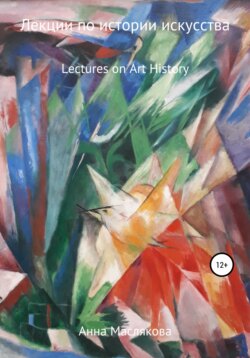Читать книгу Лекции по Истории Искусства. Lectures on Art History - Анна Ивановна Маслякова - Страница 3
Lecture one
ОглавлениеGods and Heroes
As you know, the influence of Antiquity on the history of Art is difficult to overestimate. Many architectural monuments were inspired by Antique samples (see Fig. 1.). For example, the painting style of the Loggias of Raphael in the Vatican (as well as their copy adorning the Hermitage Museum in St. Petersburg, which was made in the 18th century by the order of the Empress Catherine II) is based on the bizarre, grotesque ornament of the Golden House of Nero, discovered by chance at the end of the 15th century. The aesthetics of “The Belvedere Torso”, found in Rome in the 15th century, had a great influence on the work of such prominent artists as Michelangelo and Rubens.1 Whereas James Stewart’s and Nicholas Revett’s study “The Antiquities of Athens” largely determined the direction of the development of the British architecture in the late 18th century.
In general, interest in the ideals of the past has had a special attraction and charm. So it is no coincidence that many authors has turned to this topic, starting with Richard Wagner, who developed Germanic mythology in his cycle of four epic operas called “Ring of the Nibelungen”, and ending with “The Lord of the Rings” by J.R.R. Tolkien creating his own, unique mythology. Not to mention Woody Allen’s movie “Midnight in Paris” emphasizing the fact that every generation finds the past much more attractive than the present.
As a matter of fact, there are a lot of plaster cast collections around the World aiming to develop the aesthetic taste of the audience and awaken people’s interest in the works of the outstanding masters of the past, including the Cité de l’Architecture et du Patrimoine located at the Palais de Chaillot in Paris, the Cast Gallery of the Academy of Fine Arts Museum in St. Petersburg, the plaster cast reproductions located at the Pushkin Museum, etc.
Fig. 1. Sculptural décor of the Hermitage Museum.
Рис. 1. Скульптурный декор Эрмитажа.
On the one hand, Nature is an integral part of Ancient culture (see Lecture “Art and Nature”), but at the same time, it can destroy the Art objects created by man. Suffice it to recall the eruption of Vesuvius in 79 BC, which killed thousands of inhabitants of the Roman cities of Pompeii, Herculaneum and Stabia. But at the same time, due to the unique property of the volcanic ash that coated those cities, they have been preserved in their original state, and we have a unique opportunity to study their culture and Art. Besides, the excavations of Pompeii led to the emergence of the Neo-Pompeian Style, for example, “The Last Day of Pompeii” by Karl Bryullov, the Pompeian Dining Room in the Winter Palace of the Romanovs designed by the architect Alexander Bryullov, the Apartments of the King and Queen in the Munich Residence decorated by Leo von Klenze, etc.
1
Jones, C.P., “Michelangelo’s Inspiration: The Belvedere Torso”, accessed September 20, 2022, https://medium.com/thinksheet/michelangelos-inspiration-the-belvedere-torso-5f0622062c03.
